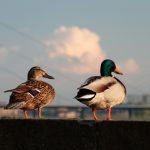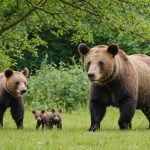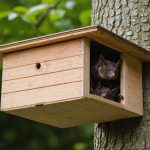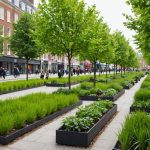The evocative chirp and flutter of birds in our cities are more than just a pleasant backdrop to urban life. Birds are vital components of our ecosystems, playing key roles in pest control, pollination, and seed dispersion. However, urbanization has been identified as a major threat to bird diversity. Recent studies on bird diversity in urban areas have shown a spike in interest as scholars on Google and Crossref contribute to understanding the impact of urban development on bird populations. This article will explore the extent to which urban greening projects in the UK are bolstering species diversity and abundance in city centers.
The State of Bird Diversity in Urban Areas
Bird diversity in urban regions has become a hot topic in recent years, with data revealing alarming trends. The cityscape, with its concrete jungles, has been largely inhospitable to many bird species. Birds in urban areas are affected by loss of habitat, pollution, and intensified human activities. However, thanks to the increasing awareness of biodiversity loss, cities are making efforts to transform into greener spaces. Urban greening projects are being implemented across the UK in an attempt to create a more bird-friendly environment.
Avez-vous vu cela : What guidelines should UK residents follow to properly construct bat boxes in their vicinity?
Urban Greening Projects in the UK
The UK has made significant strides in urban greening, with cities across the country launching various initiatives. Urban greening projects typically involve increasing green spaces, creating rooftop gardens, planting trees along streets, and developing urban parks. These enhancements not only boost the aesthetic appeal of the city but also act as a haven for birds.
For instance, the city of London has embarked on a mission to become the world’s first National Park City. This initiative underscores the city’s commitment to green spaces, with the ambition of making over half of the city’s area green by 2050.
A voir aussi : Empowering Wildlife: The Role of UK Veterinary Practices in Conservation Initiatives
Impact of Urban Greening on Bird Diversity
The decision to increase green areas in urban landscapes is not simply for aesthetic reasons. A study found in Google Scholar shows that urban greening projects have a direct impact on bird species richness and abundance.
These biodiverse spaces provide a wide range of habitats for different bird species. For example, rooftop gardens offer nesting sites for birds such as the black redstart, a species that has adapted to urban life. Similarly, the expansion of green spaces within a city can increase the availability of food resources, bolstering bird abundance.
The results of urban greening initiatives are promising. For instance, the city of Sheffield, which has implemented extensive greening projects, has experienced a marked increase in bird diversity. Data from this city shows that urban greening not only attracts a greater number of bird species but also supports the survival of those that are already present.
Bridging the Gap Between Urbanization and Bird Diversity
Urbanization is often seen as a threat to biodiversity. However, if done consciously and sustainably, it can present opportunities to enrich our urban ecosystems. Urban greening projects in the UK demonstrate how urban spaces can be reimagined to accommodate a diverse array of bird species.
This approach requires a holistic understanding of the requirements of different bird species and the establishment of varied habitats that cater to these needs. In addition to planting trees and generating green spaces, city planners need to think about providing water sources and nesting sites, and managing pests that might pose a threat to bird species.
The Role of Citizen Science in Urban Bird Conservation
The success of urban greening projects is not solely down to city planners and environmentalists. Ordinary citizens have a vital role to play. Citizen science initiatives, such as the RSPB’s Big Garden Birdwatch, enable people to contribute data that informs conservation efforts. Such campaigns also raise awareness and foster an appreciation of the rich biodiversity present even in city centers.
The power of technology, including platforms like Google Scholar and Crossref, has made scientific data more accessible than ever. This access means that everyone, from city planners to school children, can contribute to understanding and conserving our urban bird populations.
In summary, urban greening projects in the UK offer a beacon of hope for bird diversity in cities. While the challenges of urbanization are considerable, the initiatives described in this article demonstrate that it is possible to create cities that are both vibrant urban centers and thriving ecosystems.
Citizen Engagement in Urban Bird Conservation
Delving into citizen engagement in conservation efforts, citizens play a pivotal role in urban bird conservation. The advent of citizen science initiatives, like the RSPB’s Big Garden Birdwatch, has enabled ordinary people to become critical contributors to the quest for increasing bird diversity. These initiatives are designed to allow individuals to collect data about bird populations in their local areas. This data is then used to inform conservation efforts, helping to shape urban greening projects and policies.
The role of technology, particularly platforms such as Google Scholar and Crossref, cannot be overstated. These platforms have democratized access to scientific data, making it more accessible than ever. Not only do these platforms provide valuable resources for city planners and researchers, but they also enable everyday citizens to contribute to the understanding and conservation of urban bird populations. In addition to data contribution, these platforms also offer educational resources that raise awareness about the importance of bird diversity and the impacts of urbanization.
Moreover, urban greening projects provide an opportunity for community engagement. Citizens can participate in tree-planting activities, creation of rooftop gardens, and the development of urban parks. These activities not only enhance community spirit but also foster a deeper connection with nature, nurturing an appreciation for the rich biodiversity present even in city centres.
Conclusion: The Promise of Urban Greening for Bird Diversity
In conclusion, urban greening projects in the UK are shining a light on the potential for cities to support and enhance bird diversity. While urbanization poses significant challenges to biodiversity, the initiatives explored in this article demonstrate the possibility of creating cities that are both dynamic urban centres and thriving ecosystems.
With the help of technology and platforms like Google Scholar and Crossref, data on bird species richness and abundance is now more accessible than ever, empowering both professionals and citizens to take part in conservation efforts. This accessibility has not only informed urban planning and greening projects but has also played a key role in fostering an appreciation for bird diversity and the importance of green spaces in our urban areas.
The future of our urban bird communities depends largely on how we manage urbanisation. As the UK’s urban greening projects have shown, when we consciously and sustainably develop our cities – through the addition of green spaces, provision of nesting sites and water sources, and effective pest management – we can create environments that support a rich diversity of bird species.
The urban bird conservation movement is a testament to the adage that every little helps. From city planners to school children, everyone has a role to play in preserving and enhancing bird diversity in our cities. The chirps and flutters of a diverse array of bird species are the soundtrack of a vibrant, thriving city – a city that respects and nurtures its natural inhabitants. The journey to such cities is ongoing, but the strides made by the UK’s urban greening projects give us reason for optimism.
















